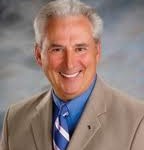3 CEO Transition Tactics: The Victory Lap and More

by Fred Johnson, CUES
The trick to retiring gracefully is to prepare well for your exit—and then, when you leave, to never look back.
Indeed, in my first CU Insight column of this year, I told the story of how I couldn’t go back and retrieve my jacket after turning over the command of an army company. The battalion commander was right when he told me it would confuse people to see the old leader when the new leader had just taken over.
In that column I also talked about high-level best practices in leadership succession that I learned in the army and in my 23 years as president/CEO of CUES. In this column, I offer three more tips—hands-on, practical tactics to help make a CEO transition as smooth as possible.
- Make sure you give your board a lot of notice. About 18 months ago, I let the CUES Board know I would retire Dec. 31, 2012. With this much notice, the board was able to hire an executive search firm, conduct its search and announce the new CEO (Charles E. Fagan, III) at CEO/Executive Team Network, as they had planned. I think the CUES Board did a great thing when it enlisted the help of CUES strategic provider JMFA. A good executive search firm can take a real load off a board. Having those 18 months of lead time also gave opportunity for staff to celebrate our financial turnaround and meet the new CEO before his official start date on Jan. 2. The idea behind that little bit of overlap was to soothe any uncertainty employees might have been feeling.
- Reflect on what you’ve done in your career. The staff at CUES was just incredible about having a list of things that have happened during my time with the organization. A great way to track events can be to look back at newsletters, board reports, articles and awards—not to mention letters from members. An interesting note: Taking a “victory lap” is probably even more important for staff than it is for the CEO. Taking stock in what has happened during the CEO’s tenure helps employees get ready to move forward under new leadership. A word to the wise: If retirement is a few years off, it’s a good time to start documenting events.
- Get in touch with your retirement. Just like there’s a learning curve to becoming a parent, there’s a learning curve to becoming a retiree. For example, there are a lot of laws that affect when and how you can access your retirement money. Also, a recently retired CUES member gave me a heads up that there would be things about retirement I just wouldn’t know right away, such as “How do I get paid?” When I asked my financial advisor about this, he said I just had to tell him how often I wanted to take disbursements of my retirement funds and “the money will show up in your CU account just like it does now.”
Now, it’s important to note that even though I couldn’t go back and get my jacket when I turned over command of that army company so many years ago, I still had friends in the army after I left. I’m quite sure things will be the same with my credit union industry career. When I walk out the door of CUES on Dec. 31, I’ll have my sights set on things like my family, travel and art, rather than day-to-day leadership of an association. But I’ll still welcome opportunities to say hello to my staff and to all of you next time our paths cross. Take care!





